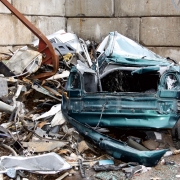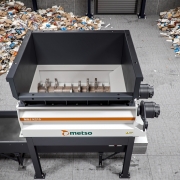BIR Global eForum – Shredder Committee: BIR Survey to Shed Light on Top Safety Hazards within Shredder Operations
The BIR Shredder Committee was “very excited” about its first-ever membership survey into shredder-related incidents and injuries, reported its Chairman Alton Scott Newell III of Newell Recycling Equipment in the USA. The questionnaire, the launch of which coincided with the committee’s first-ever eForum session on June 9, would be conducted at the start of every year to collate useful data from the previous 12 months, he explained.
In creating the survey, BIR had drawn on the experience of Chris Bedell, Senior Vice President at The David J. Joseph Company in the USA. During the BIR Convention in Barcelona two years ago, he had highlighted some of the key findings of an analysis of shredder facility incidents within his own business, with data having revealed that some 75% of accidents were connected to maintenance operations. BIR’s survey was “very user-friendly”, he told the eForum.
The survey is targeted at those companies operating shredders of more than 1000 HP and can be completed via desktop/laptop computer or smartphone, added BIR Trade & Environment Director Ross Bartley. All the information provided by members would be treated confidentially and the data would be aggregated to provide a deeper understanding of risks within shredder operations. BIR was hoping for the widest possible participation in the survey in order to maximize its effectiveness as an information tool in countering injuries, he said.
At the same Barcelona Convention, Dr Thomas Papageorgiou of Anamet SA in Greece had spoken about efforts within Europe to develop a BREF document covering Best Available Techniques to prevent and control shredder emissions. The final document had emerged after a protracted process of “compromise” by all stakeholders – including the industry, EU member states and NGOs – and so it was “sad”, said Dr Papageorgiou, that some governments were already demanding adherence to even stricter limits.
The latest shredder list presented by Mr Newell indicated that the global fleet was likely to have remained at around 1158, comprising figures of 322 for the USA, 300 for Europe and 536 for the rest of the world.
The eForum also featured three guest presentations from equipment providers. Mike Shattuck of Eriez Magnetics Europe Ltd argued that manual picking generally yielded irregular results whereas his company’s Shred-1 Ballistic Separator, for example, represented “a low-cost solution to provide a consistent, low-copper, quality scrap” in an automated process.
Karl Hoffmann of Steinert GmbH in Germany emphasized the increased scrap sales opportunities created by high-end sensor sorting equipment, focusing on the ability of his company’s X-ray technology to remove magnesium from Zorba.
According to Brian Gist of Tomra Sorting GmbH in the UK, magnesium was more commonly encountered in North America than in Europe and required a reliable, robust means of separation in order to increase processed scrap quality and value. His company’s X-TRACT could offer “super clarity” on signal detection and was particularly suited to batch operating tasks for smaller players, he maintained.
Source: BIR – Bureau of International Recycling (Brussels, 11 June, 2020)









